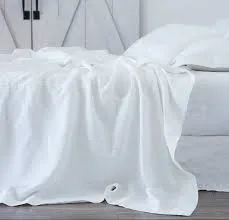wide fabric
The Versatility and Applications of Wide Fabric
Wide fabric, as the name suggests, refers to textiles that are produced with a significant width, generally exceeding 60 inches. This type of fabric has become increasingly popular due to its versatility and functionality across various industries. From fashion to upholstery and automotive to industrial applications, wide fabric plays a crucial role by offering convenience and efficiency.
One of the most notable advantages of wide fabric is its ability to cover larger areas without the need for seams, making it ideal for applications that require a smooth, uninterrupted surface. In the realm of upholstery, for instance, wide fabric enables furniture manufacturers to create elegant pieces without the distraction of visible seams. This is particularly important for modern design aesthetics, where clean lines and minimalism are highly valued. Whether it's for sofas, curtains, or wall coverings, wide fabric’s seamless nature enhances the overall appeal of the final product.
In the fashion industry, wide fabric opens up a world of possibilities for designers. Fashion houses often use wide rolls of fabric for creating flowing dresses, capes, and oversized garments. The ample width allows designers to experiment with draping techniques or cutting styles that demand more fabric. Furthermore, wide fabric is conducive to producing bulk quantities, thereby streamlining the manufacturing process. For fashion brands looking to optimize production while maintaining quality, wide fabric is indeed a favorable option.
wide fabric

When it comes to industrial applications, wide fabric has proven invaluable. It's widely used in the production of tents, tarps, and awnings where durability and resilience are paramount. The construction of these items often requires extensive coverage, thus wide fabric is the perfect solution, offering both functionality and weather resistance. Additionally, this type of fabric is employed in the manufacturing of protective clothing and equipment, especially for hazardous environments where workers need reliable protection without compromising on comfort.
The automotive sector also benefits significantly from wide fabric. Car manufacturers use wide textiles for vehicle interiors, including seats, headliners, and door panels. The ability to produce large pieces of fabric from a single roll translates into time savings during installation and a more polished look inside the vehicle. The integration of wide fabrics not only enhances visual appeal but also contributes to the overall durability and comfort of the automobile.
Moreover, wide fabric caters to the needs of the home textiles market. Bed linens, tablecloths, and draperies made from wide fabric provide a cohesive and stylish solution for home decor. With the added benefit of reduced seams, consumers can enjoy a cleaner look in their home environment. In recent years, the demand for sustainable fabrics has surged, and many manufacturers are responding by creating wide fabrics from recycled materials, catering to eco-conscious consumers.
In conclusion, wide fabric is a multifaceted resource that plays an essential role in several industries. Its ability to cover expansive areas seamlessly makes it a preferred choice in upholstery, fashion, automotive, and industrial applications. As trends evolve and technology advances, the potential for wide fabric is only set to expand further, promising innovative solutions across various sectors. Whether it’s enhancing aesthetics, streamlining production, or ensuring durability, wide fabric continues to be a pivotal element in today's diverse textile market.
-
How to Cut Linen Maintenance Costs by 30% with Proper Polycotton IroningNewsAug.11, 2025
-
Elevating Comfort and Quality with the Right Bed LinenNewsJul.07, 2025
-
Bedding Essentials: From Percale Sheets to White Quilts, Finding Your Perfect Sleep HavenNewsJul.07, 2025
-
Choosing the Right Bedding for a Comfortable and Stylish BedroomNewsJul.07, 2025
-
Understanding the Diverse World of Towel TypesNewsMay.29, 2025
-
The Ultimate Comfort: Discover the Benefits of Polycotton SheetsNewsMay.29, 2025
-
Experience Luxury with 1800 Brushed Microfiber SheetsNewsMay.29, 2025






